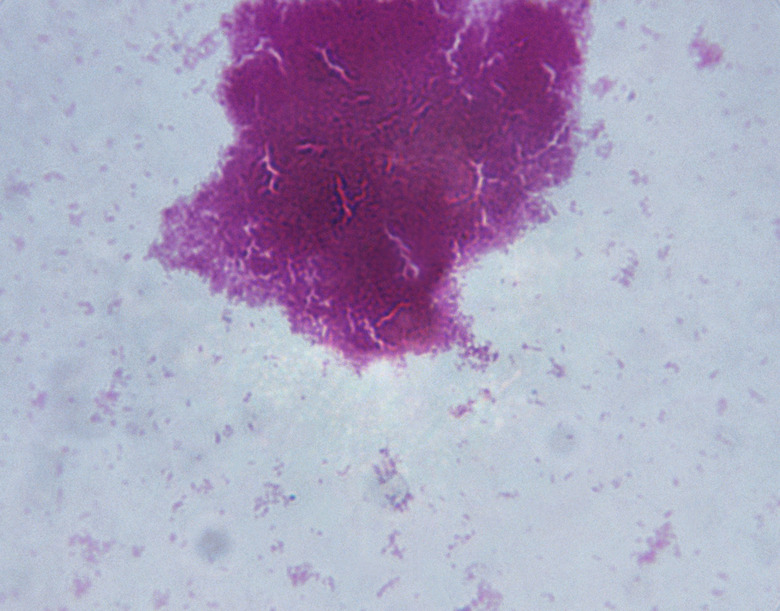How Do Mitochondria & Chloroplasts Resemble Bacteria?
Close to four billion years ago, the first forms of life appeared on Earth, and these were the earliest bacteria. These bacteria evolved over time and eventually branched out into the many forms of life seen today. Bacteria belong to the group of organisms called prokaryotes, single-celled entities that don't contain internal structures bound with membranes. The other class of organisms is the eukaryotes that have membrane-bound nuclei and other structures. Mitochondria, which provide energy for the cell, are one of these membrane-bound structures called organelles. Chloroplasts are organelles in plant cells that can make food. These two organelles have much in common with bacteria and may actually have evolved directly from them.
Separate Genomes
Separate Genomes
Bacteria carry their DNA, the molecule that contains genes, in circular components called plasmids. Mitochondria and chloroplasts have their own DNA carried in plasmid-like structures. In addition, the DNA of mitochondria and chloroplasts, like that of bacteria, does not attach to protective structures called histones that bind the DNA. These organelles make their own DNA and synthesize their own proteins independent of the rest of the cell.
Protein Synthesis
Protein Synthesis
Bacteria make proteins in structures called ribosomes. The protein-making process begins with the same amino acid, one of 20 subunits that make up proteins. This starting amino acid is N-formylmethionine in bacteria as well as mitochondria and chloroplasts. N-formylmethionine is a different form of the amino acid methionine; the proteins made in the rest of the cell's ribosomes have a different start signal — plain methionine. Additionally, chloroplast ribosomes are very similar to bacterial ribosomes and differ from the cell's ribosomes.
Replication
Replication
Mitochondria and chloroplasts make more of themselves in much the same way as bacteria reproduce. If mitochondria and chloroplasts are removed from a cell, the cell cannot make any more of these organelles to replace the ones that were removed. The only way these organelles can be replicated is through the same method used by bacteria: binary fission. Like bacteria, mitochondria and chloroplasts grow in size, duplicate their DNA and other structures, and then divide into two identical organelles.
Sensitivity to Antibiotics
Sensitivity to Antibiotics
Mitochondrial and chloroplast function seem to be compromised by the action of the same antibiotics that cause problems for bacteria. Antibiotics such as streptomycin, chloramphenicol and neomycin kill bacteria, but they also cause damage to mitochondria and chloroplasts. For example, chloramphenicol acts on ribosomes, the structures in cells that are the sites of protein production. The antibiotic specifically acts on bacterial ribosomes; unfortunately, it also affects the ribosomes in mitochondria, concludes a 2012 study by Dr. Alison E. Barnhill and colleagues at Iowa State University College of Veterinary Medicine and published in the journal "Antimicrobial Agents and Chemotherapy."
The Endosymbiotic Theory
The Endosymbiotic Theory
Because of striking similarities between chloroplasts, mitochondria and bacteria, scientists began looking into their relationship with one another. Biologist Lynn Margulis developed the endosymbiotic theory in 1967, explaining the origin of mitochondria and chloroplasts in eukaryotic cells. Dr. Margulis theorized that both mitochondria and chloroplasts originated in the prokaryotic world. Mitochondria and chloroplasts were actually prokaryotes themselves, simple bacteria that formed a relationship with host cells. These host cells were prokaryotes that were unable to live in oxygen-rich environments and engulfed these mitochondrial precursors. These host organisms provided food to their inhabitants in exchange for being able to survive in a poisonous oxygen-containing environment. Chloroplasts from plant cells may have come from organisms similar to the cyanobacteria. The chloroplast precursor came to live symbiotically with plant cells because these bacteria would provide their hosts with food in the form of glucose while the host cells would offer a safe place to live.
References
- National Center for Biotechnology Information: The Genomes of Mitochondria and Chloroplasts
- University of Arizona Ecology and Evolutionary Biology: Section 17-Organelle Genetics
- State University of New York at Orange: The Origin of Mitochondria and Chloroplasts
- Antimicrobial Agents and Chemotherapy: Adverse Effects of Antimicrobials via Predictable or Idiosyncratic Inhibition of Host Mitochondrial Components
Cite This Article
MLA
Dinh, Ho-Diep. "How Do Mitochondria & Chloroplasts Resemble Bacteria?" sciencing.com, https://www.sciencing.com/mitochondria-chloroplasts-resemble-bacteria-22520/. 24 April 2017.
APA
Dinh, Ho-Diep. (2017, April 24). How Do Mitochondria & Chloroplasts Resemble Bacteria?. sciencing.com. Retrieved from https://www.sciencing.com/mitochondria-chloroplasts-resemble-bacteria-22520/
Chicago
Dinh, Ho-Diep. How Do Mitochondria & Chloroplasts Resemble Bacteria? last modified March 24, 2022. https://www.sciencing.com/mitochondria-chloroplasts-resemble-bacteria-22520/
